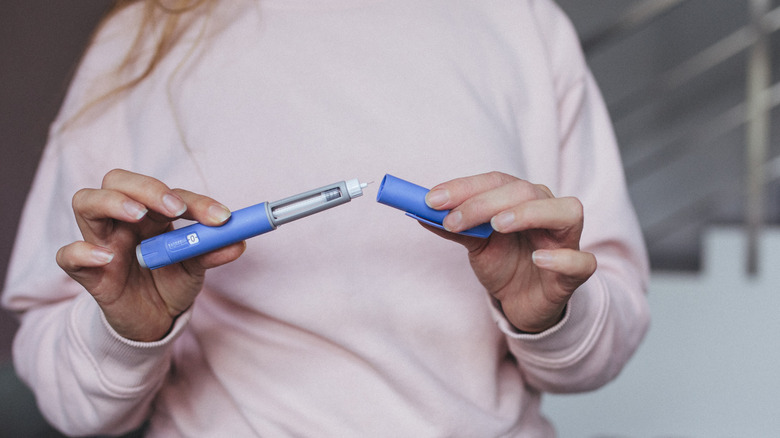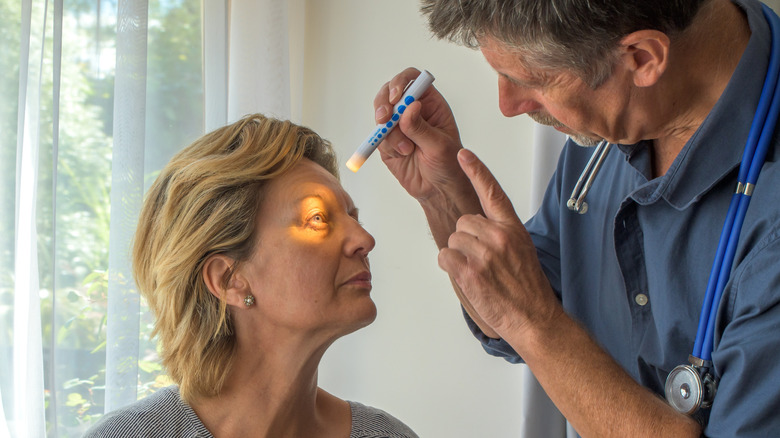Keep An Eye Out For This Potential Side Effect Of GLP-1s
Most people have heard about the benefits of GLP-1 medications, and about 1 in 8 have even tried them (per Kaiser Family Foundation). These drugs were originally designed to help people with type 2 diabetes manage their blood sugar, but a surprising side effect turned out to be weight loss. That's because GLP-1 drugs slow digestion and help you feel fuller after eating.
People taking a GLP-1 medication like Ozempic often report side effects like stomach issues, loss of appetite, dizziness, or headaches. But researchers are starting to uncover other, less familiar risks. A 2025 study in JAMA Network Open found that people with type 2 diabetes who took semaglutide (Ozempic) or tirzepatide (Mounjaro) had a 76% higher risk of developing a rare condition called nonarteritic anterior ischemic optic neuropathy (NAION). NAION can cause sudden vision loss due to reduced blood flow to the optic nerve. The study also showed a 65% higher risk of other optic nerve disorders among people taking these medications.
GLP-1 medications may affect the nerves and blood vessels of your eyes
Although taking a GLP-1 medication was linked to a higher risk of optic nerve disorders, researchers found that the overall risk is still quite low. For example, just 0.04% of people on semaglutide or tirzepatide developed NAION, compared with 0.02% of people on other diabetes medications. It's worth noting that people with type 2 diabetes, high blood pressure, high cholesterol, or a history of smoking already have a higher risk of NAION, according to the American Academy of Ophthalmology. And GLP-1s aren't the only drugs tied to this condition. Phosphodiesterase-5 (PDE-5) inhibitors, such as sildenafil (Viagra), have also been linked to a higher risk of NAION.
GLP-1 medications may also affect other aspects of eye health, according to a 2025 study in JAMA Network. People with type 2 diabetes are already at risk for diabetic retinopathy (DR), a condition that damages the blood vessels in the retina. The study found that GLP-1 use was tied to a slightly higher risk of developing DR. However, for people who already had DR, starting a GLP-1 drug didn't make their condition worse. In fact, they were less likely to develop serious complications such as bleeding in the eye or blindness. Importantly, this study did not find a link between GLP-1 medications and NAION.

